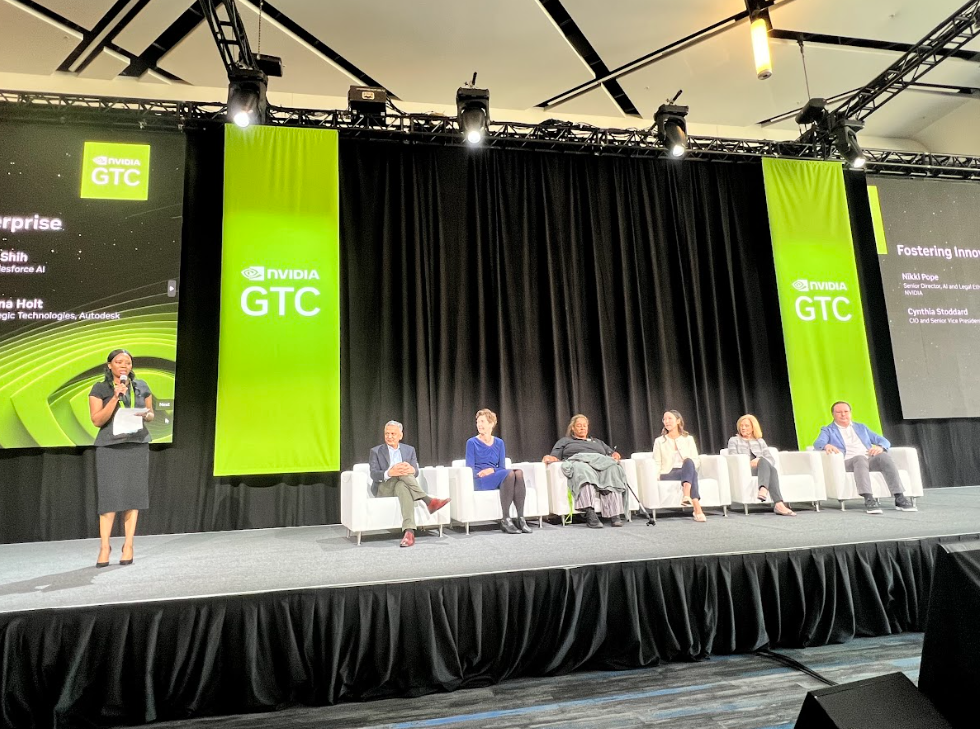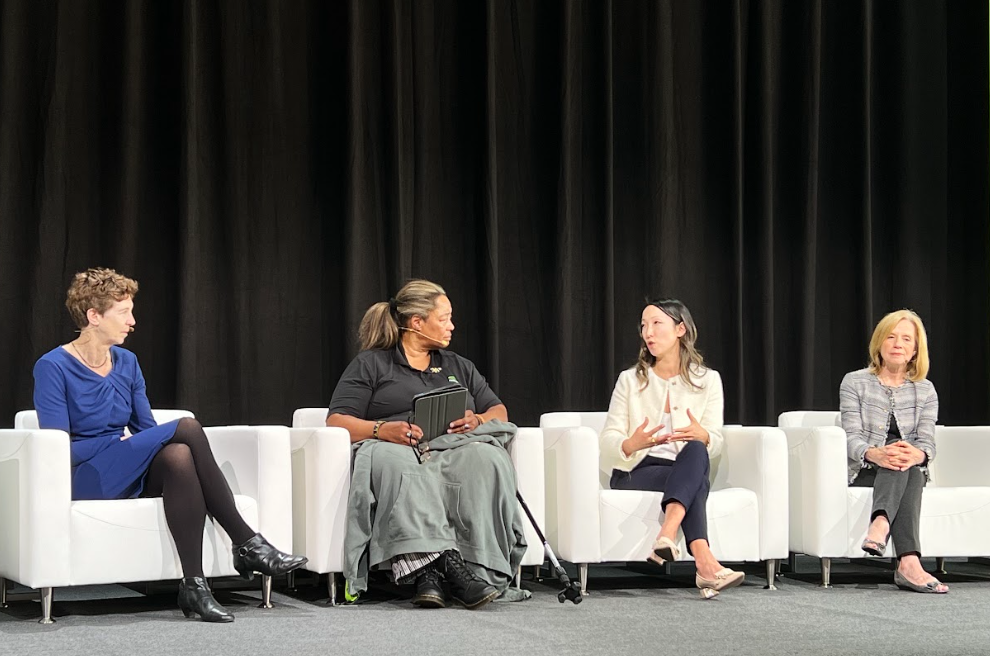Challenges and Strategies to Promote Innovation in Organizations: Insights from Global Leaders at GTC NVIDIA 2024

The stage at Nvidia’s global conference (GTC2024) was the ideal setting for an in-depth and inspiring discussion on the challenges and strategies for promoting innovation in organizations. One of the panels brought together renowned experts, who shared their views on how to deal with legacy systems, internal resistance and technical debts, elements often present on the road to innovation.

Rohit Chauan, VP of Mastercard, believes that we are facing a transformation as big as the internet itself and that all leaders must frame their projects with a view to taking advantage of the main capabilities of the new technologies.
In the case of the Internet, for example, the cost of communication and connection tends to zero. At that time, all the companies that managed to look at their challenges and projects through the lens of zero-cost communication came out ahead. And this created a series of opportunities in all aspects of the business, such as online stores, service applications, etc.
Today, the cost of creating forecasts and what-if scenarios is tending towards zero. So every leader should look at their challenges through the lens of simulation and prediction. “What can we do differently, now that we have this incredible simulation machine in our hands?” should be the question every leader should ask themselves.
Adobe’s Cynthia Stoddard adds that a large part of the leader’s role in this context is to point out problems or opportunities. Asking the right questions, stimulating debate and fostering a safe environment for innovation. It is also necessary to create a culture where a certain level of failure or trial and error is acceptable and to prepare corporate structures to take advantage of AI.
Cynthia says that Adobe created a unified source of data to make this information available to all the teams and managed to get them all to share their databases. But all this is only possible with effective Change Management so that people understand what they stand to gain from it.
Clara Shi, CEO at Salesforce AI, says that the nature of innovation is changing and that in the future you may not really need to rewrite software for innovation, but this will only happen if data is accessible and collaboration is encouraged.
According to her, companies have always lived in the world of structured data and today we have the possibility of using unstructured data. This means that if we overcome the integration challenges, we can put around 80% more data in people’s hands.
How do you get people on board?
Alex Balazs, VP at Intuit, believes that the biggest challenge in a traditional organization is to create the trust and corporate structure needed to innovate. After all, large organizations don’t tend to look kindly on mistakes and usually don’t have adequate incentives to stimulate innovation. That’s why he feels that more than looking outwards, it’s necessary to look inwards and organize a system of success metrics, incentives and leadership that encourage innovation.
Susanna Holt, VP at Autodesk, sees that the process requires a delicate balance, where value and empathy for current solutions are exercised, but at the same time people are encouraged to engage in building something new. That’s why, whenever possible, he tries to encourage projects between new and old teams, so that everyone is connected to the same mission.

Cynthia adds that another important point is to educate teams, both formally (with courses and objectives) and informally, simply by opening up space for people to interact with these tools and experiment freely.
Rohit points out that a big problem is that a large part of Enterprise companies’ revenue comes from legacy technologies, which still work well and are too robust to be reworked with new approaches. So a lot of the effort comes from integrating legacy stacks with new technologies to generate value.
Susanna adds that another challenge is human, as people working on legacy systems can feel demotivated and want to abandon core systems that are essential to companies. It is essential to create a sense of positive evolution and not something that discards or simply replaces the good work being done. In this sense, it is essential to have good communication, where the purpose of the change, the path, the advantages and the importance of this team in the context are made clear.
Alex goes on to talk about the human aspect of making the most of the talent working on legacy systems, training and motivating them so that they – who know them like no one else – can train themselves to evolve or revolutionize these systems.
This scenario requires ambidextrous leadership. We need to value the systems that work, understand what needs to be adjusted and what will be disrupted, and work as one team, with different missions and objectives for each part of the technology stack.
All the leaders reinforced challenges that are very familiar to many large organizations: incentive structures, a culture of innovation, prepared leaders and secure access to the data and technologies needed to innovate.
At the end of this panel, as well as practically all the others at the event, we were left with the clear feeling that we are living in very exciting and challenging times, and that traditional or innovative companies, large or small, must not miss the opportunity to rethink their business now in the face of these new possibilities.